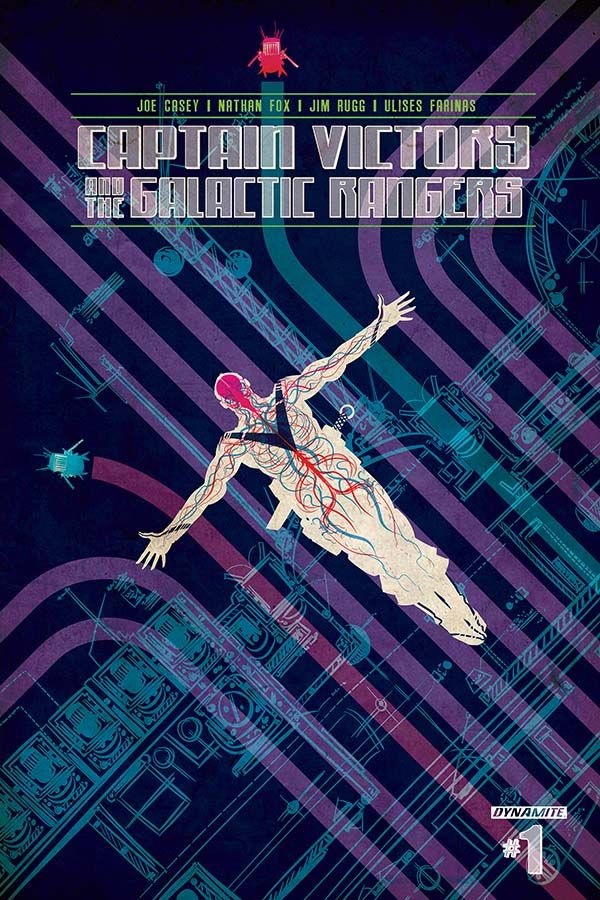If you're going to take a crack at a Jack Kirby creation for your own sake, you better have a plan and you had better execute to that plan or exceed it. From the opening scene of "Captain Victory and the Galactic Rangers" #1, writer Joe Casey and artist Nathan Fox hit readers in the face with large, explosive action and really don't let up before the comic book's final page.
Fox is one of three artists on the book and handles eighteen of twenty-two pages, opening up the issue and finishing it off. The opening scene depicts Mekkanos attacking the Dreadnaught: Tiger in the depths of space. Like the opening sequence of "Star Wars: A New Hope," readers don't know one from the other, but are given ample opportunity to learn the most about the Galactic Rangers. Using squared off letters that serve as panels to describe the action and circumstance of the story, Fox stretches into new space, blending the visual narrative with the written word. Colorist Brad Simpson provides hot bursts of explosions and cold vastness to the star field while letterer Simon Bowland brings urgency to the crew as the reader is introduced.
Along with the titular Captain Victory, Major Klavus appears the most human, sporting some wild eyebrows and a tight afro. Mister Mind has humanistic features, but is essentially a skinned head on a mechanical body, similar to M.O.D.O.K., but more science fiction-fueled. Tarin and Orca, while humanoid in body structure have bestial countenances, rounding out the crew introduced to readers in "Captain Victory and the Galactic Rangers" #1. On the expository page that introduces the crew, Fox, Simpson, Bowland and Casey all come together, giving readers everything they need to proceed while also raising the thrill level for this comic.
Following that, the art chores are brilliantly divided, shifting with the story, not subverting it, but collaboratively working with Casey to coax the most out of each of the scenes. Fox shoulders the load, but Jim Rugg tags in and brings the wide-eyed denizens of Kirby's catalog in a story that trips back to Captain Victory's orientation. Simpson alters his palette to accommodate the change of setting and time, but keeps the luminescence up. Rugg's psychedelic layouts are filled with patterns and color that borrow from the most transcendent aspects of Kirby, Ditko and Steranko. Ulises Farinas' draws a scene set in the 1970s and presents the sensory overload that would, of course, be oppressive to an abandoned waif, regardless of how the child came to find himself in Manhattan.
"Captain Victory and the Galactic Rangers" #1 is as much a tribute to Kirby as it is a journey to new spaces. It doesn't stop there, but seeks out the new, giving these characters an opportunity to be presented as a fresh franchise. Casey and crew showcase sharp reverence for the creator, confidence in the creation and ambition to move forward. This feels like a comic from my childhood, before previews and interviews and creator sneak peeks. I don't know what's going to happen in "Captain Victory and the Galactic Rangers" beyond what I've just read, but I'm all in. This is a comic book I could -- and probably will -- hand off to some of my lapsed reader friends. It's a solid, approachable start with a nice range of art and an action-packed thrill ride of a story that has just enough humanity to keep the science fiction aspects from becoming overwhelming.

